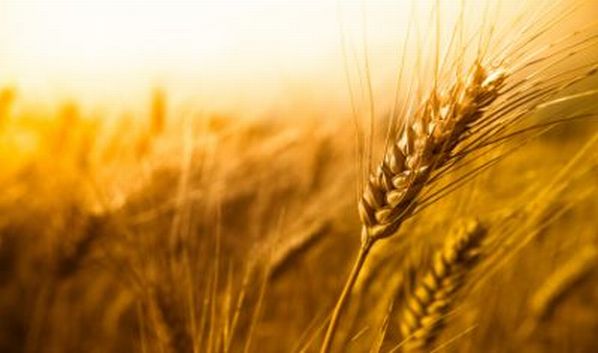
I am an “old school” mom when it comes to feeding my family. Meat and potatoes. We drink a lot of milk. We eat bread. We eat pasta. Probably many of us in the agriculture community are similar with our consumption habits, ingrained in us since childhood.
And yet, I think of the moms I have come in contact with through the years who shun dairy and bread for themselves and their families. “I’m trying to do less carbs,” or, “We’re cutting back on bread” has been a popular comment. When the Commodity Classic was held in Anaheim, Calif., a few years back, I remember calling the hotel restaurant to order the Chicken Alfredo I saw on their website. “Oh. We don��’t do pasta anymore,” the waitress told me when I ordered. I stammered out, “I beg your pardon?” Her response went from factual to snide: “Ma’am, we don’t doooooooooo pasta.”
After shaming me for my carb craving, she went on to say the restaurant had updated its menu, drastically reducing bread and pasta, but the update had not yet been applied to the website. I bit my tongue and ordered a chicken ceasar salad instead.
Why wheat got its mojo back
Where am I going with this? The recent wheat rally was in response to the Coronavirus panic buying at stores which depleted shelves of bread and pasta. The food industry has responding wonderfully to get those shelves restocked, and wheat futures have also rallied in response to demand uptick.
Wheat futures have now rallied up to major technical resistance levels on charts. According to the considerably large wheat carryout around the world (287.1 million metric tons), one would think that the wheat rally will come to a screaming halt. And it just might. But that ending stock number is large in part due to a decade long trend of decreased wheat demand for food (here in the United States anyway).
Something to consider
Here is something to drastically consider that no one is talking about. If the U.S. unemployment rate becomes potentially as high as what the news is reporting (somewhere between 20 and 30%), and IF this economy doesn’t get turned back around sooner than later, then you will have hundreds of thousands of Americans who will be in dire need of “cheap food.”
These are people who likely cut back on carbs over the past few years and were able to spend some disposable cash drinking trendy coffee. Now these will be Americans who are out of work, have children at home, and will be hungry. IF this economy doesn’t get back up and running soon the food that will then be in demand will be bread and pasta. This food is cheap, easy to make, and fills the bellies of hungry children.
New demand
This would be NEW, increased demand for wheat products when you compare it to recent history.
Now think about that increased demand for bread and remember that the majority of wheat planted in this country is Hard Red Winter Wheat (Kansas Wheat Futures) or Soft Red Winter Wheat (Chicago Wheat futures) both which were planted back in late fall to be harvested this summer. Therefore, if this new demand does actually occur, we are not able to plant more winter wheat for seven months.
The market might be able to switch some acres into Hard Red Spring Wheat (Minneapolis wheat futures) which is planted in spring and grown primarily in North and South Dakota, Montana, and Wyoming. The Hard Red Spring Wheat contract has a higher protein level and is used in bagels and some pizza crusts.
Jaw dropping global carryout
I currently sit in the camp of “we have plenty of wheat” and point to those jaw dropping large global carryout levels. But I am very aware of this potential new food demand here in the United States (again, only if the economy is shut down longer than expected). And then there was that unexpected large purchase from China this week of 12.5 million bushels of hard red winter wheat.
Could wheat demand actually be increasing around the world? Or is this just a flash in the pan, and the hedging opportunity many producers have been waiting for?
We need to stay on top of this one, friends.
Reach Naomi Blohm: 800-334-9779 and [email protected]
Disclaimer: The data contained herein is believed to be drawn from reliable sources but cannot be guaranteed. Individuals acting on this information are responsible for their own actions. Commodity trading may not be suitable for all recipients of this report. Futures and options trading involve significant risk of loss and may not be suitable for everyone. Therefore, carefully consider whether such trading is suitable for you in light of your financial condition. No representation is being made that scenario planning, strategy or discipline will guarantee success or profits. Any decisions you may make to buy, sell or hold a futures or options position on such research are entirely your own and not in any way deemed to be endorsed by or attributed to Total Farm Marketing. Total Farm Marketing and TFM refer to Stewart-Peterson Group Inc., Stewart-Peterson Inc., and SP Risk Services LLC. Stewart-Peterson Group Inc. is registered with the Commodity Futures Trading Commission (CFTC) as an introducing broker and is a member of National Futures Association. SP Risk Services, LLC is an insurance agency and an equal opportunity provider. Stewart-Peterson Inc. is a publishing company. A customer may have relationships with all three companies. SP Risk Services LLC and Stewart-Peterson Inc. are wholly owned by Stewart-Peterson Group Inc. unless otherwise noted, services referenced are services of Stewart-Peterson Group Inc. Presented for solicitation
The opinions of the author are not necessarily those of Farm Futures or Farm Progress.
Read more about:
Covid 19About the Author(s)
You May Also Like






